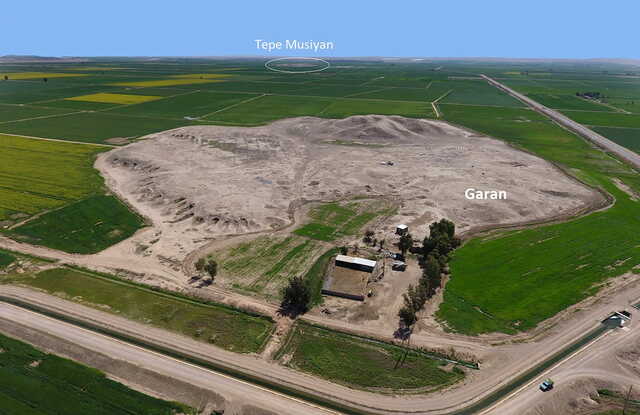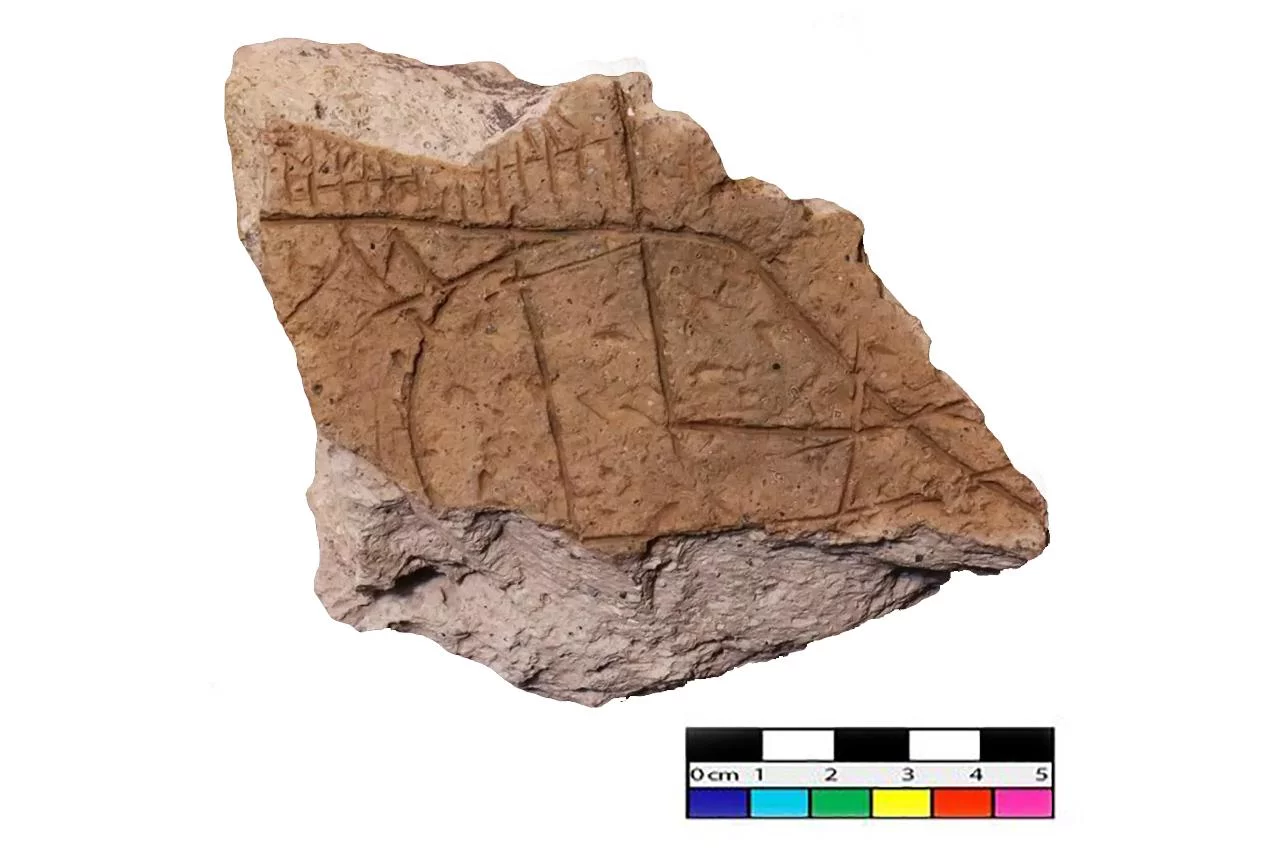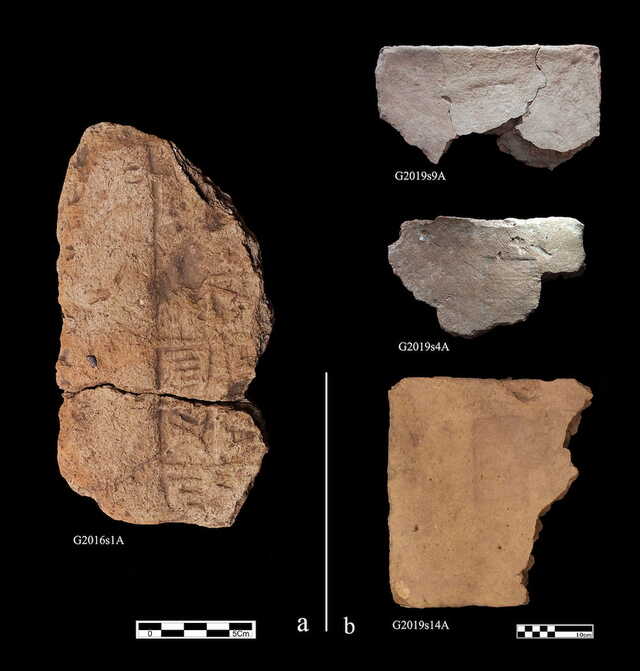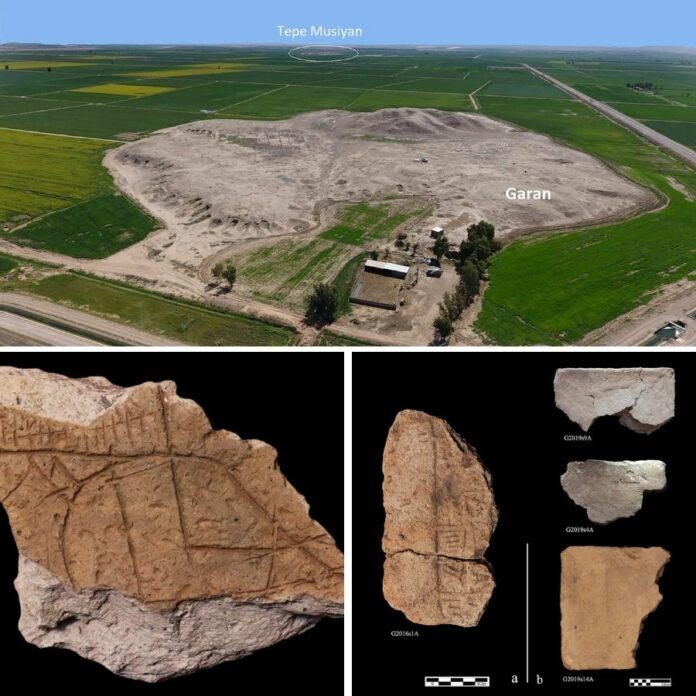In a remarkable archaeological discovery, researchers have unearthed inscribed bricks in the ancient town of Garan, located in the Dehloran plain of southwest Iran. These findings shed light on an advanced irrigation system from the Elamite period, offering invaluable insights into the region’s hydraulic engineering and its role in agricultural and political dominance. This groundbreaking discovery underscores Garan’s historical importance and its strategic role in the ancient world.
The Archaeological Site of Garan
Garan, nestled in the expansive Dehloran plain in Ilam province, is a site of significant historical interest. Located approximately 3 kilometers east of the Dovir River and 2.8 kilometers northwest of Musian Hill, the archaeological site spans an impressive 17 hectares. It features a prominent conical mound in its southern section, surrounded by smaller irregularly shaped hills, creating a unique and varied landscape.

The excavation at Garan, led by Dr. Mohsen Zeinivand and his team, has been ongoing for several years. This site’s strategic position near natural water sources made it an ideal location for both agricultural development and political activity. Its proximity to the border between Elam and Iraq further emphasizes its historical importance as a hub of interaction and resource control.
Inscriptions on the Bricks
The bricks discovered at Garan are remarkable not only for their age but also for their intricate inscriptions. Written in Akkadian script, the inscriptions feature terms like “lugal” (ruler), “dume” (son), and “bilitu” (lord), reflecting the administrative and hierarchical structure of the time. Although parts of the text are eroded, these words offer a glimpse into the governance and societal organization of the Elamite period.
One particularly fascinating brick features grooves and carvings representing geographical elements, including a river, a mountain, a dam, and irrigation channels. These depictions resemble Mesopotamian geographical plans from the second and first millennia BCE, indicating a high level of technical and artistic skill. Such designs likely served as blueprints for the construction of the irrigation system, showcasing the meticulous planning involved in managing water resources.
The Elamite Period Irrigation System
The discovery of these inscribed bricks points to an advanced irrigation system that was integral to the Elamite civilization. The grooves and inscriptions suggest that the bricks were part of a larger project to manage water flow from the Dovir River to the surrounding agricultural fields. Evidence of uncovered channels at the site confirms that this system effectively transported water to sustain the farmlands of Garan and neighboring Musian.
Dr. Zeinivand’s analysis highlights the sophistication of this water management system, which followed techniques similar to those used in Mesopotamia. The construction of dams and irrigation channels reflects a deep understanding of hydraulic engineering, emphasizing the Elamites’ ability to adapt and thrive in their environment. This system not only ensured agricultural productivity but also reinforced Garan’s significance as a center of economic activity.

Strategic Importance of Garan
Garan’s location was a key factor in its prominence during the Elamite period. Situated on the vital trade route connecting Susa and Assyria, the town served as a crucial link between major civilizations. Its fertile lands, made possible by the advanced irrigation system, further enhanced its value as an agricultural hub.
This strategic position also made Garan a contested site, as controlling its resources meant gaining power over the surrounding region. The town’s political and economic importance during the second millennium BCE highlights its role in shaping the dynamics of ancient western Iran. The irrigation system, in particular, played a pivotal role in sustaining Garan’s influence and prosperity.
Findings and Interpretations
The bricks found at Garan serve as tangible evidence of the town’s advanced planning and infrastructure. The grooves depicting irrigation channels and the inscriptions in Akkadian script suggest a well-organized society capable of executing large-scale projects. These bricks may have functioned as both practical tools for construction and symbolic representations of authority and resource management.
Dr. Zeinivand and his team believe that the findings confirm Garan’s role as a major center of agricultural and political activity during the Elamite period. The integration of engineering expertise and artistic representation on the bricks reflects the importance placed on water management and its connection to the region’s prosperity.

Conclusions
The discovery of inscribed bricks and an ancient irrigation system in Garan highlights the town’s critical role in the Elamite period. These findings offer valuable insights into the ingenuity and resourcefulness of ancient civilizations, emphasizing their ability to harness natural resources to sustain growth and development. Garan’s legacy as a political and agricultural hub underscores its enduring importance in the history of western Iran.
Through ongoing research and excavation, the archaeological site of Garan continues to reveal the sophistication of its inhabitants and their contributions to ancient hydraulic engineering. This discovery not only enriches our understanding of the Elamite civilization but also demonstrates the lasting impact of their innovations on the development of human society.
